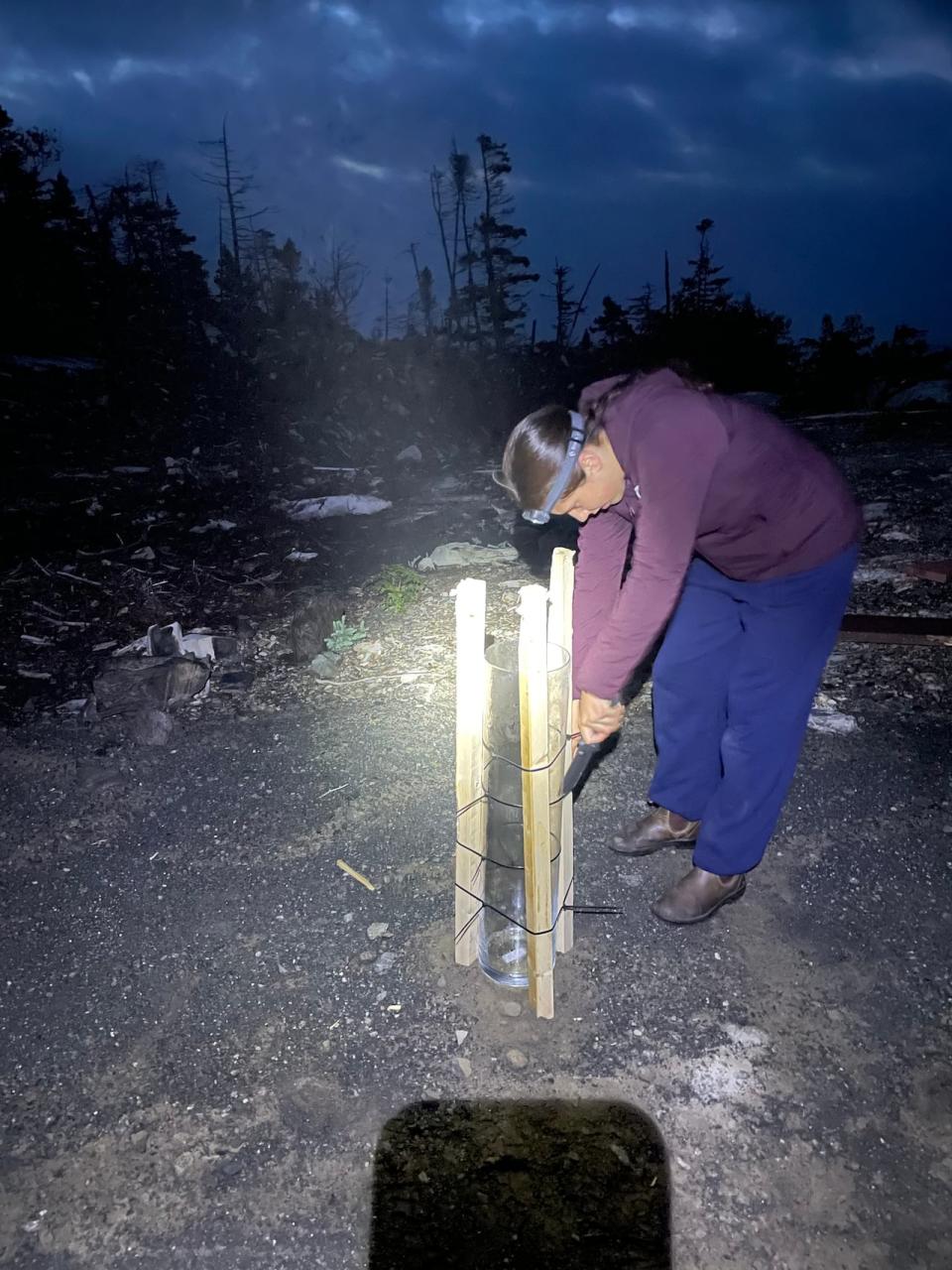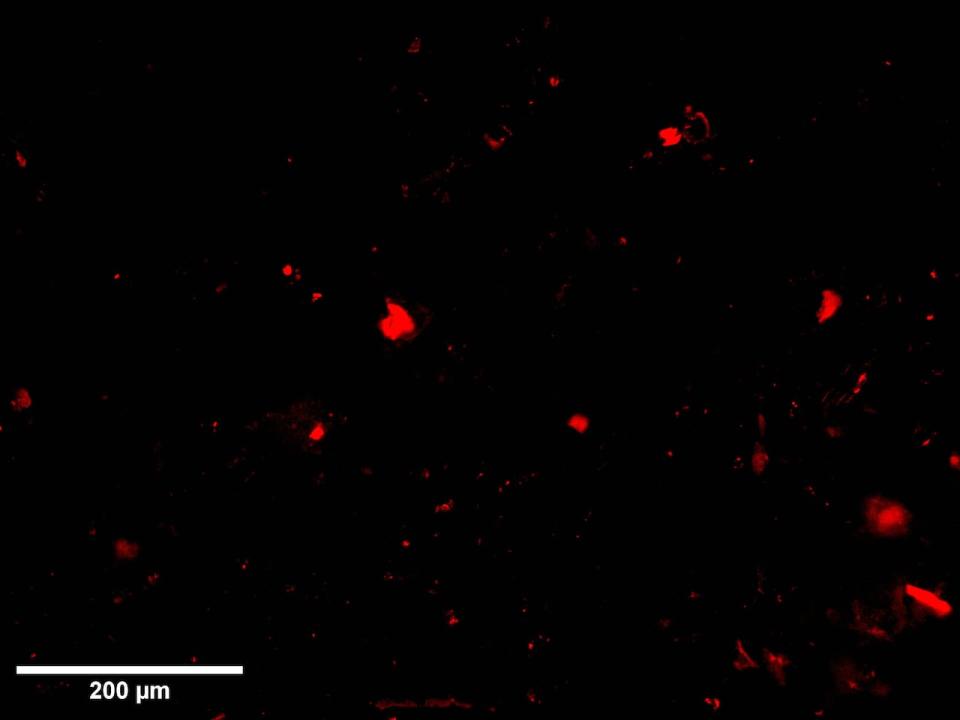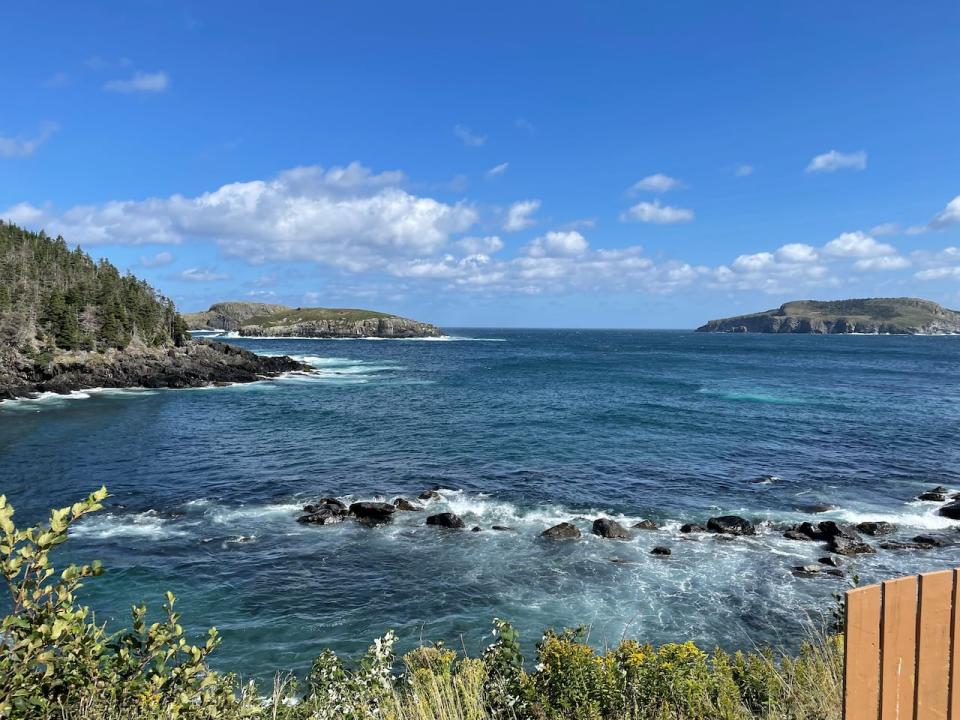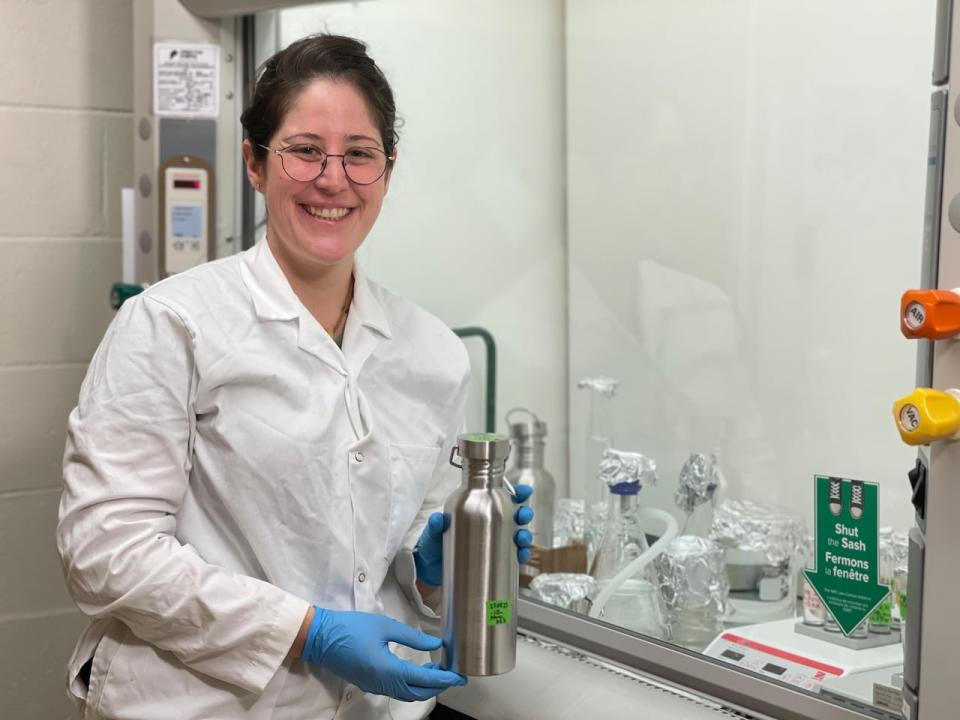As Hurricane Larry ravaged Newfoundland in 2021, university students from Halifax headed to a rural area to find out if the ocean could release microplastics into the atmosphere and then transport them through the air to otherwise pristine communities.
You could say the results blew them away.
“It was such an amazing result that we didn’t really expect,” said Anna Ryan, a master’s student in environmental sciences at Dalhousie University and lead researcher on the study.
To test their theory, the 24-year-old and another student set up a large glass cylinder — essentially trying to collect air — near Saint Michaels, a community of fewer than 300 residents on Newfoundland’s Avalon Peninsula. The ship was on site for six hours, collecting samples from before, during and after the September storm.
The highest concentration of microplastics was found in samples collected during the hurricane: more than 100,000 particles per square meter per day, an amount Ryan called much higher than has been found in any other study of microplastics in the atmosphere. Their research was published last week in Naturea leading scientific journal.


Amber LeBlanc, a Dalhousie student who helped Ryan collect samples, checks a large glass cylinder set up near Saint Michaels, NL, during Hurricane Larry. (Submitted by Anna Ryan)
Microplastics are small pieces of plastic, less than five millimeters in length, that come from the breakdown of larger plastic products or the release of particles from water bottles, plastic packaging and synthetic clothing.
Ryan said the ocean is often seen as the “ultimate sink” for microplastics. But that may not be where the plastics stay.
She said microplastic pollution is a growing problem seen in all environments around the world. It poses a risk to human and animal health, as well as to the overall health of the ecosystem, although the extent of that damage is still not well understood.
The particles Ryan’s team collected were so small they couldn’t be seen with the naked eye, about 20 to 30 times smaller than the width of human hair, she said.
“You could say that the smaller they are, the greater the risk, because they are so small that they can be ingested or inhaled very easily,” she said during a recent interview at a Dalhousie laboratory.


A sample of the microplastics collected by Dalhousie students during Hurricane Larry, seen through a microscope. (Submitted by Anna Ryan)
Her research paper notes that Hurricane Larry, which made landfall as a Category 1 storm, tracked far offshore of the east coast of the United States and eastern Canada, maintaining its track over the ocean before making landfall. land came in Newfoundland.
This made the weather event a unique opportunity for the researchers.


Anna Ryan collected samples of microplastics near Saint Michaels, NL, a sparsely populated location without major industry or other obvious sources of microplastics. She says even the most pristine places now have plastic in the air. (Submitted by Anna Ryan.)
The hurricane did not come close to major urban areas, which are widely considered a major source of airborne microplastics.
However, the study did pass over ocean areas – including the North Atlantic ‘garbage patch’ south of Newfoundland – where currents trap high concentrations of plastic in surface waters, the study said.
Microplastics were detected in all eleven samples collected during the experiment.
The levels found before and after the hurricane were relatively similar: an average of 20,000 particles per square meter per day. In contrast, the peak levels found during the hurricane were more than five and a half times higher.
There are few studies worldwide that like this
Tony Walker, a professor at Dalhousie’s school of resource and environmental studies and co-author of the paper, says there are few similar studies worldwide.
In 2020, there was a study of atmospheric microplastics in the South China Sea due to Typhoon Sinlaku, and another in 2021 during monsoon rains in Iran.
Neither was found near the level of microplastics seen in the Hurricane Larry study.
Walker said Ryan’s research further demonstrated that microplastics are present in “every environmental compartment on Earth,” and its publication in a prestigious journal like Nature is significant.
“I think that really just indicates the importance of the work, the novelty of the work,” he said.
A similar study is being conducted on post-tropical storm Fiona
Another student, Justine Ammendolia, who is doing her PhD at Dalhousie, is currently investigating how last year’s post-tropical storm Fiona affected microplastics in the atmosphere.
She collected her samples by tying a kitchen pot to her balcony on Halifax’s south side.


Dalhousie PhD student Justine Ammendolia is currently analyzing samples of microplastics she collected from the atmosphere during post-tropical storm Fiona. (Eric Woolliscroft/CBC)
Her work is not yet finished, but she describes what she has found so far as “extremely exciting and also disturbing.”
She found traces of fourteen different types of microplastics.
She said that because she and Ryan followed similar methods, she will be able to make comparisons between the two storms – one in an urban setting and one in a rural setting – when she finishes analyzing the results.
Both Ammendolia and Ryan say the best solution is to limit single-use plastics to prevent more plastic from entering the environment in the first place.
Studies like theirs are important because they provide the data needed to effect change, Ammendolia said.
“We can’t take bigger actions, like policy changes at the national level to reduce plastic pollution, if we don’t know how bad it is at a smaller level.”